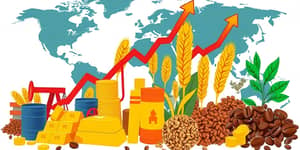Emerging markets, defined as economies transitioning toward greater industrialization and higher income levels, have captured the imagination of investors worldwide. Characterized by rapid expansion, demographic vitality, and evolving regulatory frameworks, they promise startling opportunities but also conceal dangers beneath the surface. For any investor seeking both diversification and potential outperformance, understanding the underlying dynamics is essential. This article explores the full spectrum of factors shaping returns—from structural tailwinds to political headwinds—and offers concrete strategies to harness upside while mitigating exposure.
The Promising Upside of Emerging Markets
One of the most compelling attractions of emerging markets is their capacity for accelerated expansion. Over the long term, they often outpace mature economies in terms of gross domestic product growth, fueled by urbanization, infrastructure development, and increasing consumer demand. A focus on sectors such as technology, consumer goods, and commodities can yield outsized gains when conditions align.
Moreover, emerging economies tend to harbor untapped or undercapitalized segments, making early-mover investments particularly lucrative. At the same time, portfolio managers who include these assets can achieve improved portfolio diversification against downturns and reduce correlation risk with developed markets. Below is a summary of the major rewards these markets provide.
- High growth potential over multiyear horizons, often exceeding global averages.
- Young and growing consumer bases ready to embrace new products and services.
- Resource-rich nations with strategic commodities like oil, metals, and agricultural products.
- Low labor costs supporting competitive manufacturing and export-driven growth.
- Structural reforms that drive private sector expansion and market liberalization.
- Risk premiums that compensate for added uncertainty and attract yield-seeking capital.
By tapping into these catalysts, investors can position themselves at the forefront of global growth, capturing value as economies evolve from low-income to more prosperous states.
Balancing Act: The Intrinsic Risks
Despite the alluring upside, emerging markets carry a suite of hazards that can erode returns in an instant. Elevated volatility is perhaps the most visible trait, as asset prices can swing dramatically on shifting sentiment or policy announcements. Understanding and preparing for these fluctuations is not optional—it is mission-critical.
There are multiple dimensions of risk that demand careful attention. Weak governance, currency instability, and political shifts can all conspire to undermine capital preservation. Investors must remain vigilant and adopt robust frameworks to evaluate each opportunity holistically. Consider the following major categories of risk:
- High price volatility triggered by external shocks like commodity swings or global recessions.
- Political instability and abrupt regulatory changes that can freeze sectors or reverse reforms.
- Currency fluctuations eroding foreign-denominated returns as local units devalue.
- Underdeveloped legal and accounting structures raising the specter of fraud or mismanagement.
- Liquidity challenges when selling large positions during market stress.
- Contagion effects from crises in neighboring countries or major economies.
- Fat-tail risks and skewed loss distributions leading to sudden, deep drawdowns.
Recognizing these pitfalls allows investors to adopt guardrails and limit exposure to unforeseen setbacks. A disciplined risk management process is the foundation of successful emerging market engagement.
2025 Trends Shaping the Landscape
As we navigate 2025, several macro trends have crystallized, altering the investment calculus for emerging markets. The retreat from globalization, evidenced by renewed trade tensions and supply chain reevaluations, introduces uncertainty into export-driven economies. Markets that have long benefited from seamless integration into global value chains must now adapt to a more fractured environment.
China’s growth deceleration, once unthinkable, now has ripple effects across Asia, Latin America, and Africa. Commodity producers face weaker demand, while consumer-oriented sectors in neighboring economies recalibrate expansion plans. Simultaneously, a strong US dollar and elevated US interest rates have tightened financing conditions, making dollar-denominated debt more burdensome for governments and corporations alike.
On the bright side, some nations are responding with data-driven decisions based on local insights, implementing targeted reforms to attract sustainable capital, improve infrastructure, and strengthen regulatory standards. These moves highlight the diversity of trajectories within the broad emerging market universe.
Strategies for Savvy Investors
Investing successfully in emerging markets demands a meticulous approach that addresses both reward potential and risk mitigation. A combination of broad diversification, local expertise, and active monitoring can make the difference between profit and loss. Below are practical steps that market participants can implement:
- Engage with experienced local partners and advisers to enhance due diligence.
- Spread investments across multiple countries and sectors to dilute specific risks.
- Adopt currency hedging and political risk insurance where appropriate.
- Maintain a long-term horizon to smooth out short-term volatility cycles.
- Monitor macroeconomic indicators and policy shifts continuously.
An overarching principle is to align asset selection with risk appetite and time horizon. For those comfortable with active portfolio management, tactical allocations can be adjusted in response to political events or economic data releases. Meanwhile, buy-and-hold strategies may suit investors focused on secular growth trends.
Below is a comparative summary of typical return and risk profiles for emerging versus developed market equities.
Counterpoints: The Cost of Avoidance
While the risks of emerging markets can appear daunting, wholesale avoidance carries its own downsides. Excluding these dynamic economies from a global portfolio may mean missing out on significant growth drivers and diversification benefits. During periods of market euphoria, investors heavily skewed toward developed markets can lag peers who embraced emerging opportunities.
Furthermore, periodic sell-offs in emerging assets often create attractive entry points for disciplined buyers. When risk appetite returns, these markets can rebound sharply, rewarding those who remained invested or purchased on dips. A balanced perspective acknowledges that negligence can be as perilous as overexposure.
Conclusion
Investing in emerging markets is a journey of discovery, reward, and caution. The immense growth prospects stand alongside structural vulnerabilities that can erode gains without warning. By embracing a long-term perspective and disciplined risk management, investors can position portfolios to benefit from the economic transformation taking place across Asia, Africa, and Latin America. Success hinges on thorough research, nimble adaptation to shifting dynamics, and a willingness to balance ambition with prudence.
Ultimately, the dual nature of emerging markets—high reward and significant risk—demands respect, preparation, and strategy. When navigated effectively, these markets can become a powerful engine of portfolio growth, diversification, and resilience for years to come.
References
- https://www.investopedia.com/articles/basics/11/risks-investing-in-emerging-markets.asp
- https://am.jpmorgan.com/gb/en/asset-management/per/insights/portfolio-insights/investment-trust-insights/emerging-markets/assessing-risks-and-rewards/
- https://www.ameriprise.com/financial-goals-priorities/investing/emerging-market-investments
- https://www.nbim.no/en/news-and-insights/publications/discussion-notes/2012/risks-and-rewards-in-emerging-equity-markets/
- https://www.fintrx.com/blog/investing-in-emerging-markets-risks-rewards
- https://www.invesco.com/apac/en/institutional/insights/equity/the-risk-of-avoiding-emerging-markets.html
- https://www.quanloop.com/en/insights/should-you-invest-in-emerging-markets/
- https://www.fnb.co.za/blog/investments/articles/InvestmentEducation-20240118/










